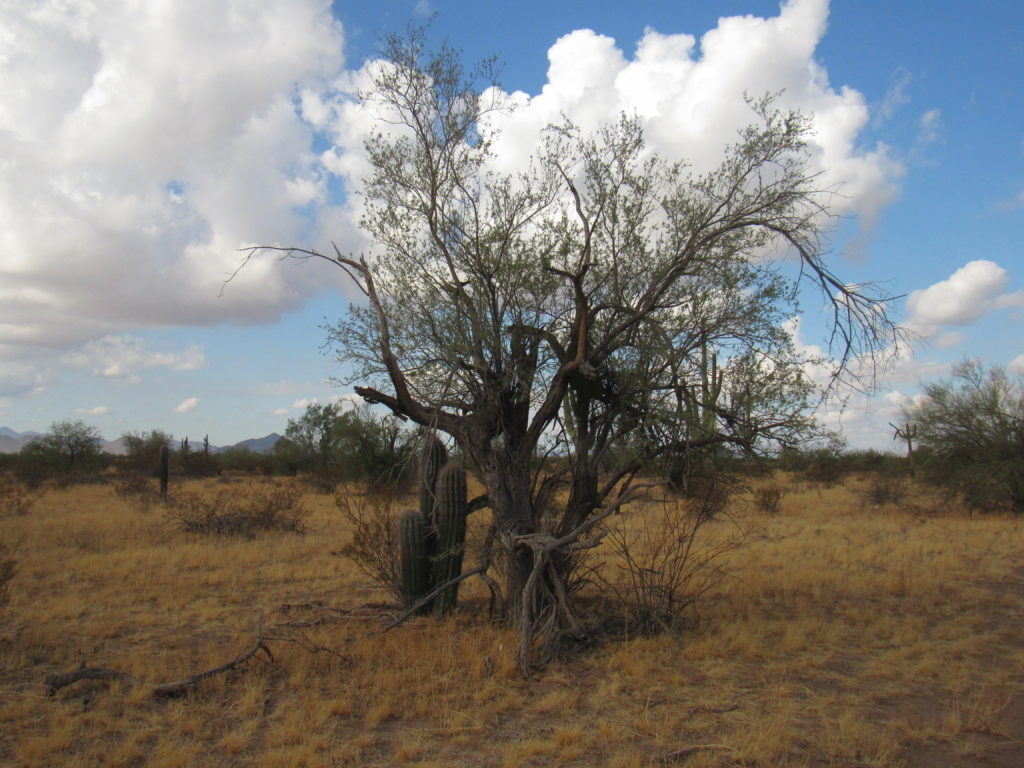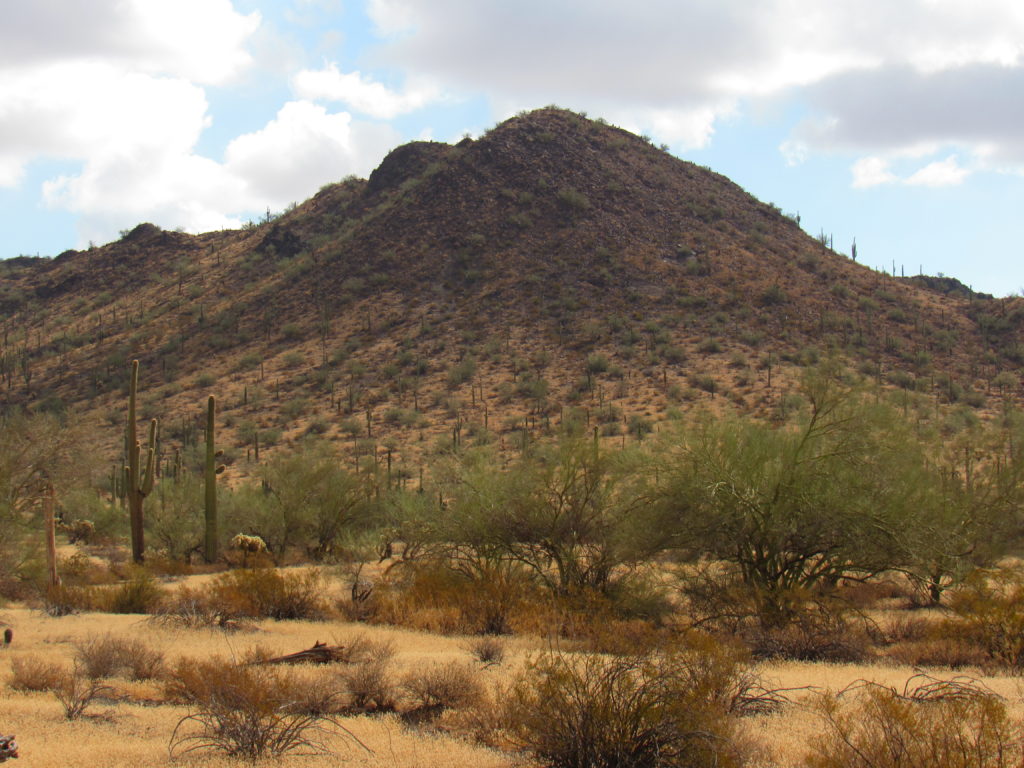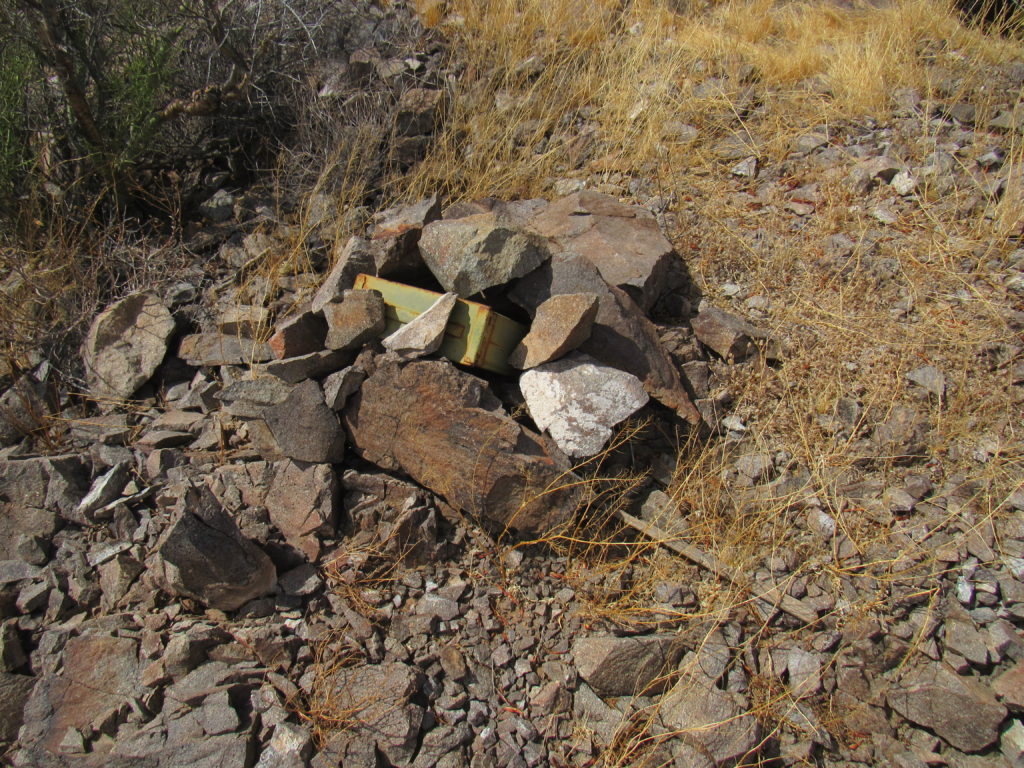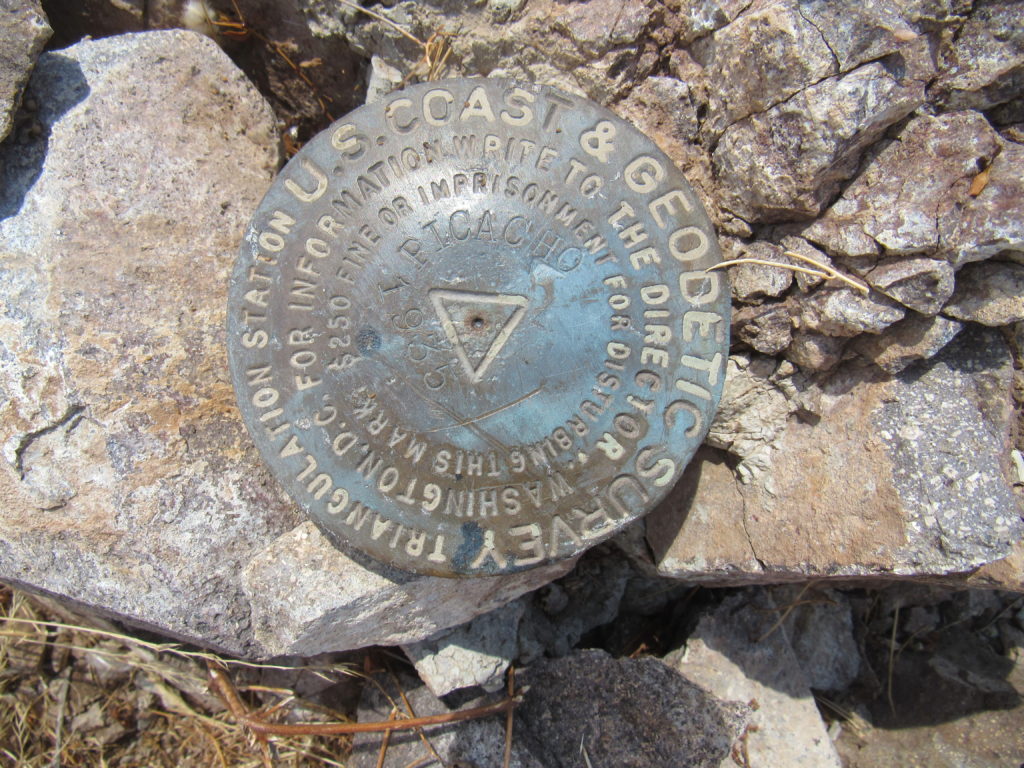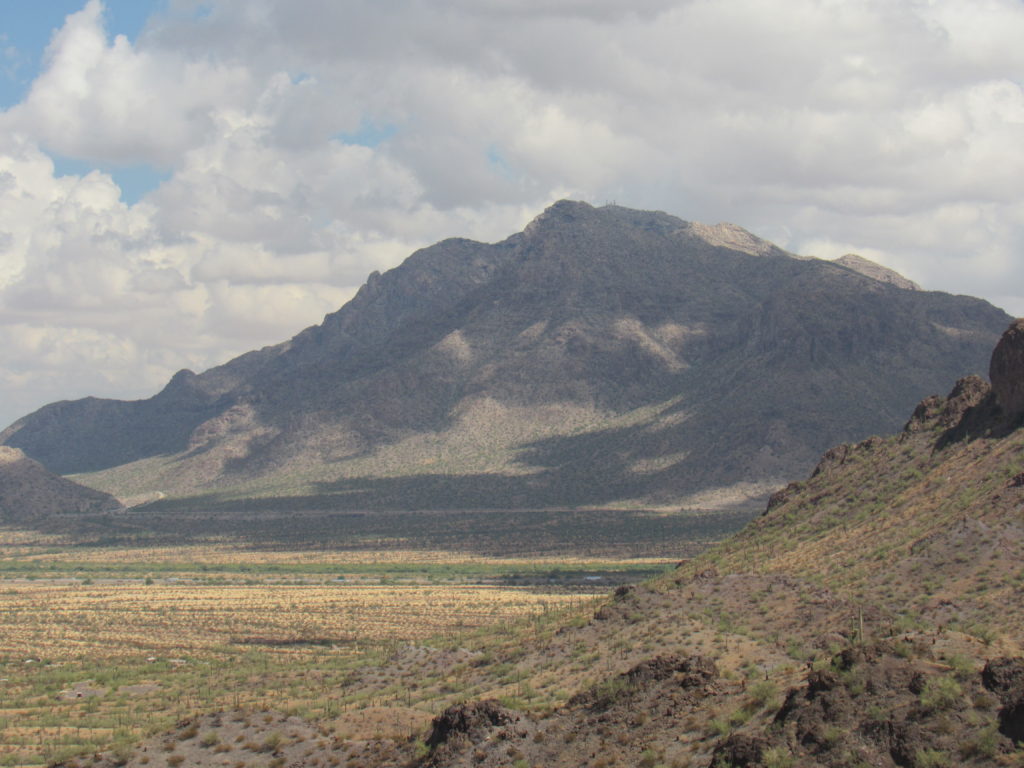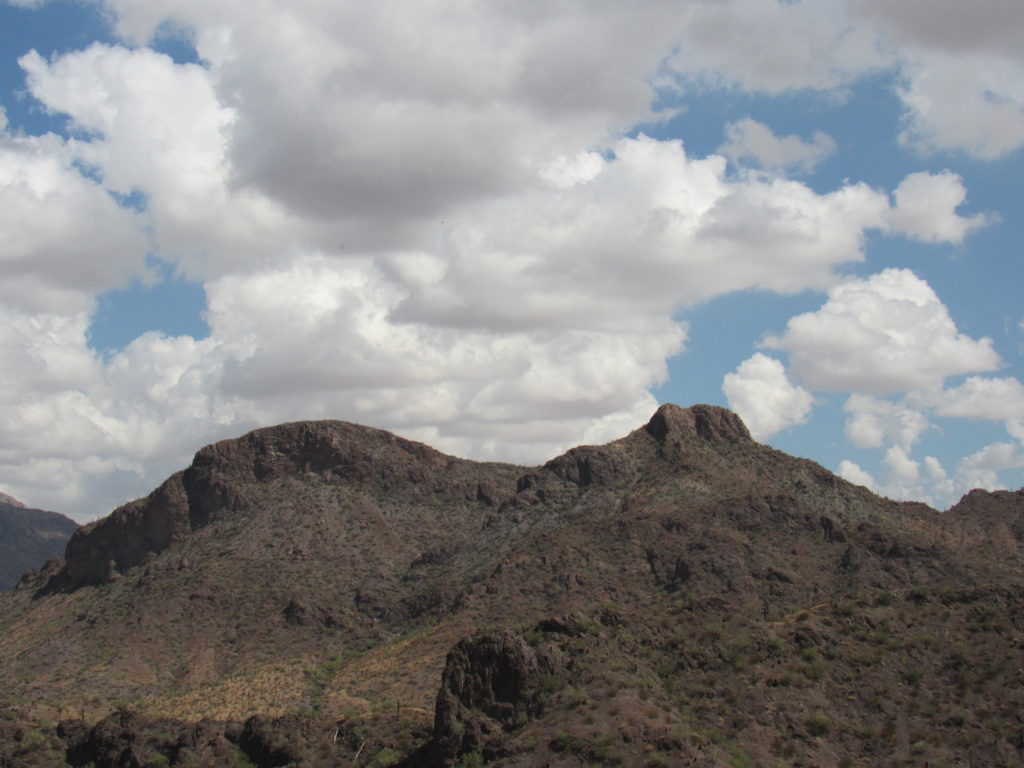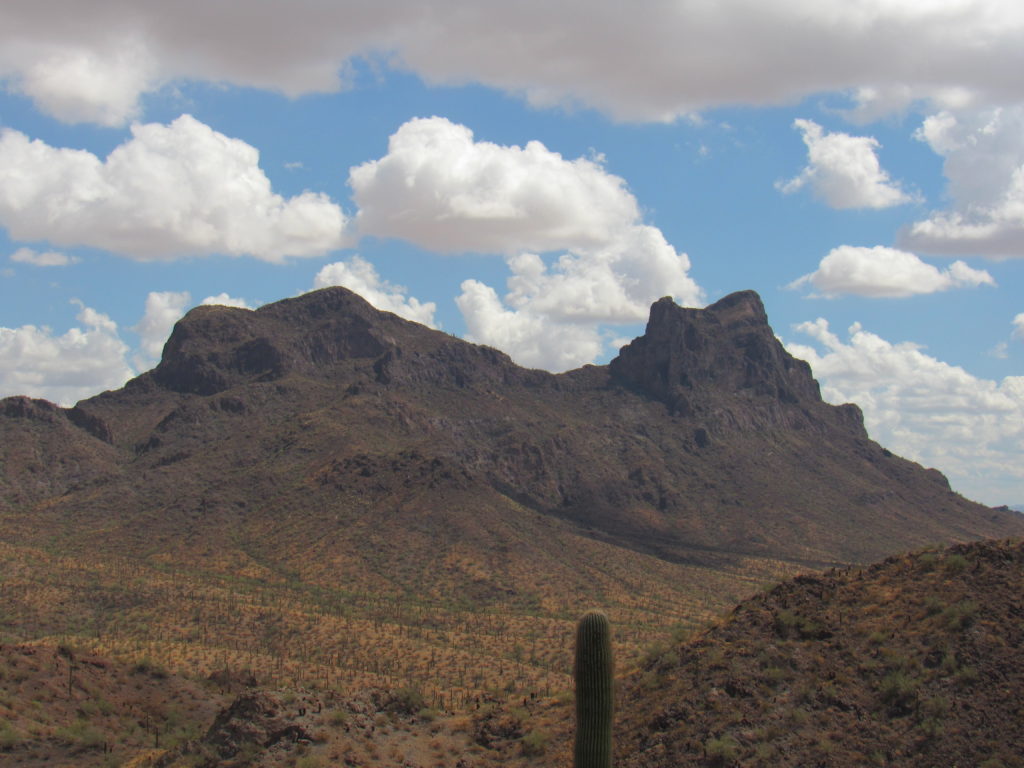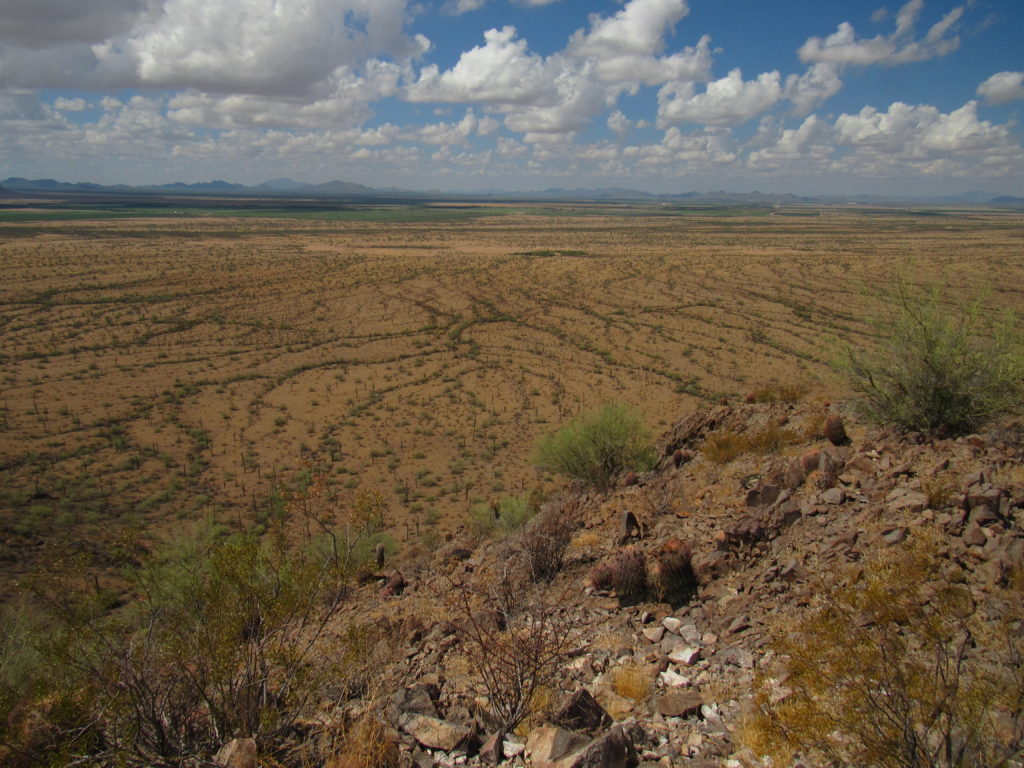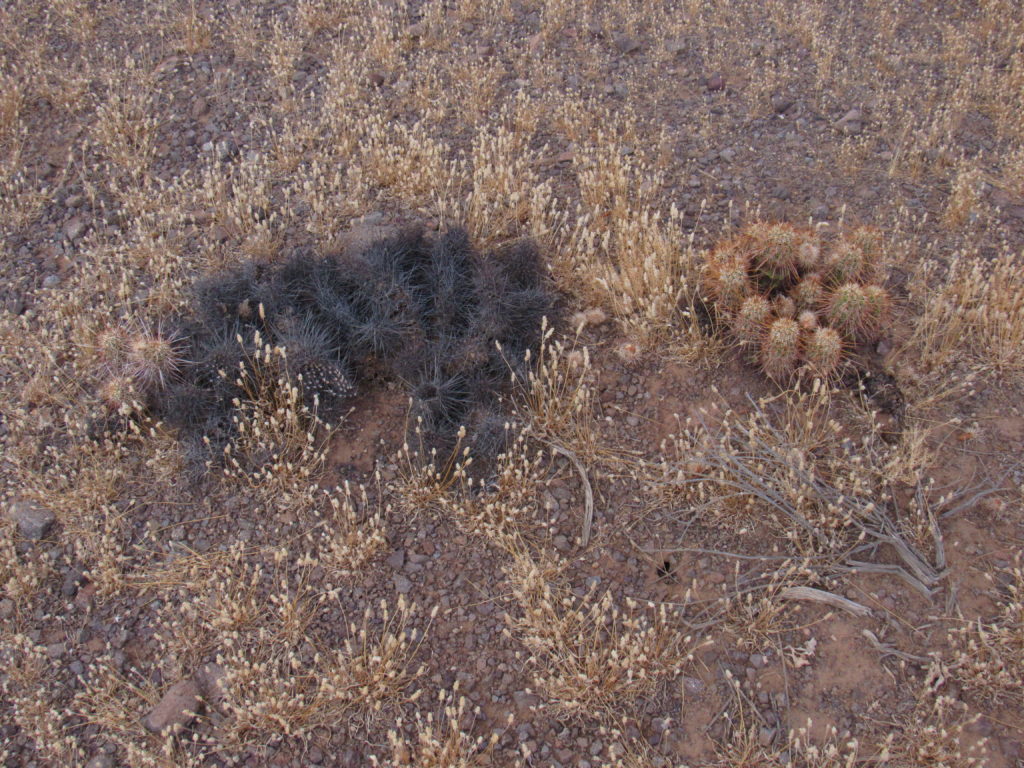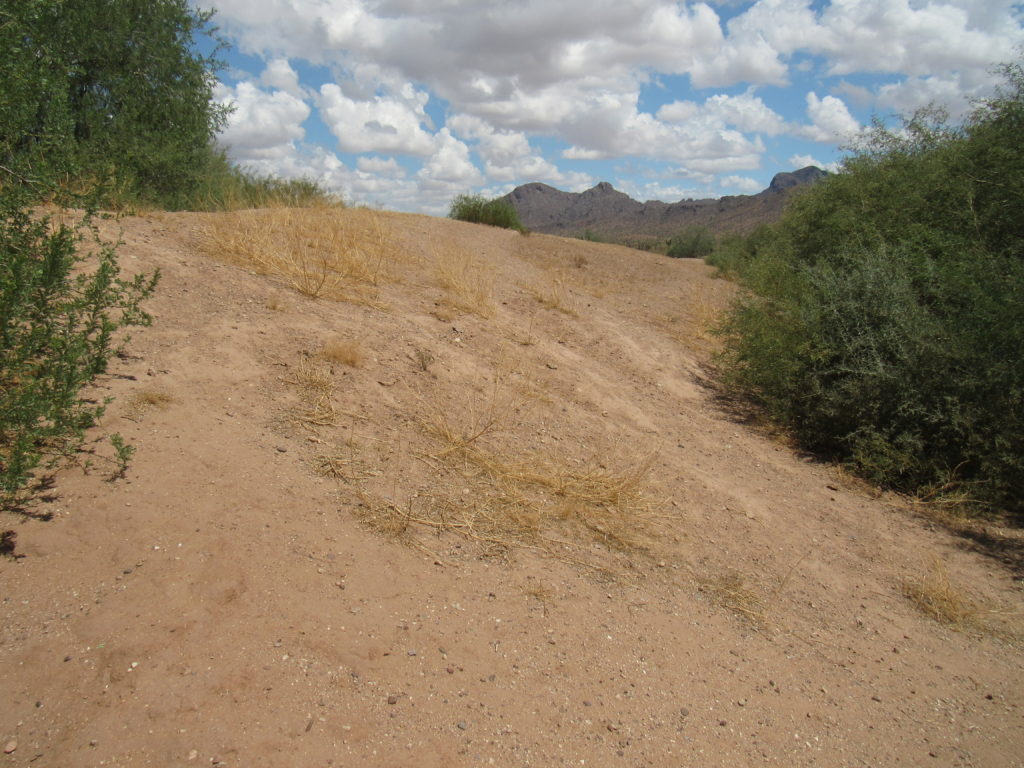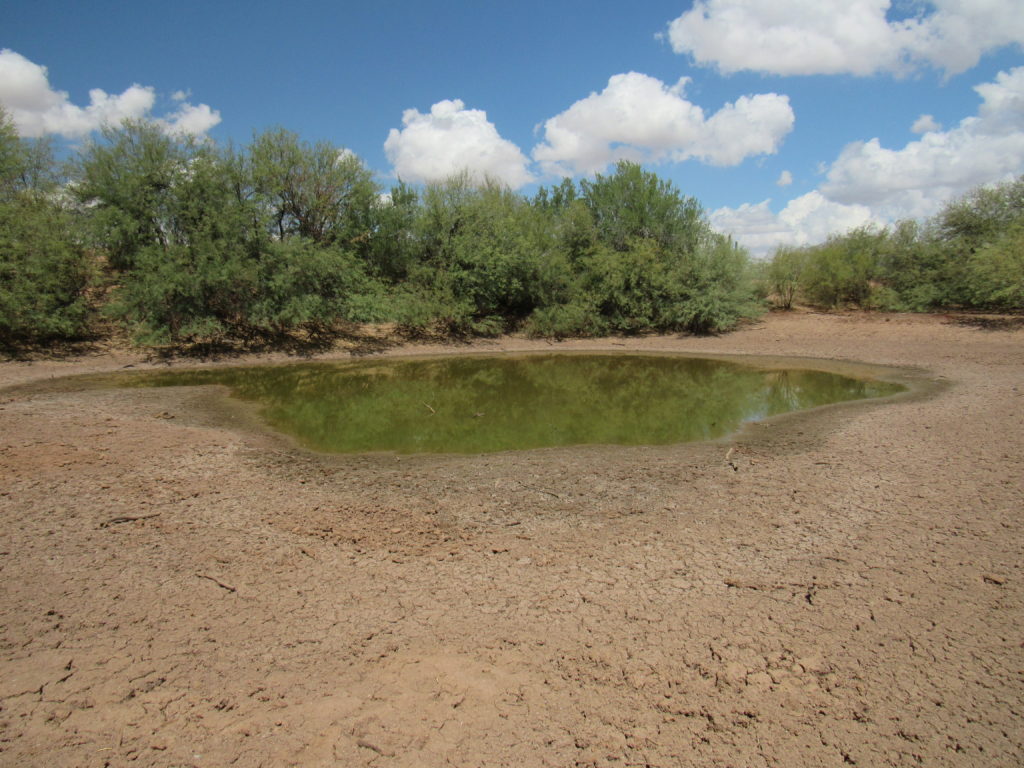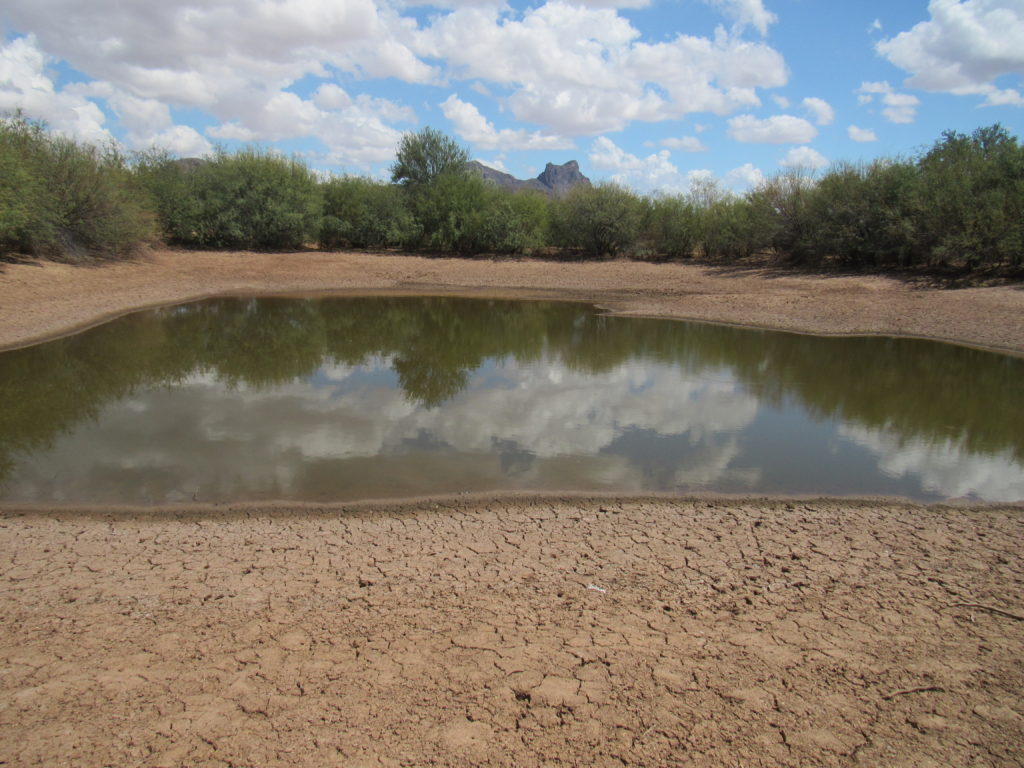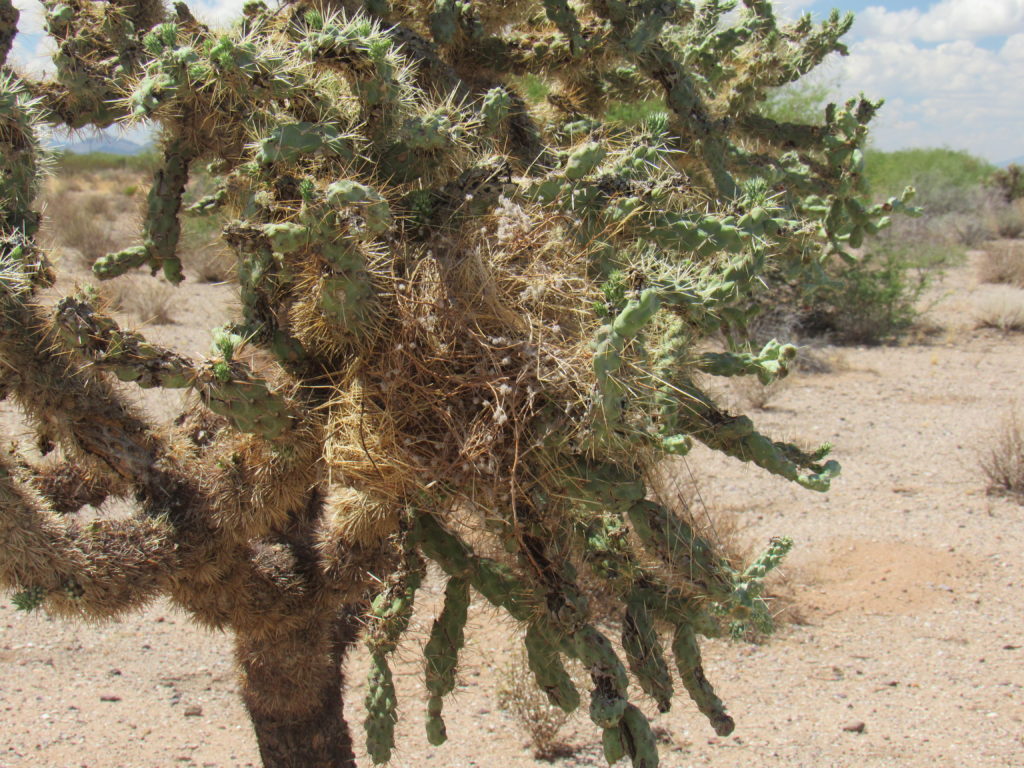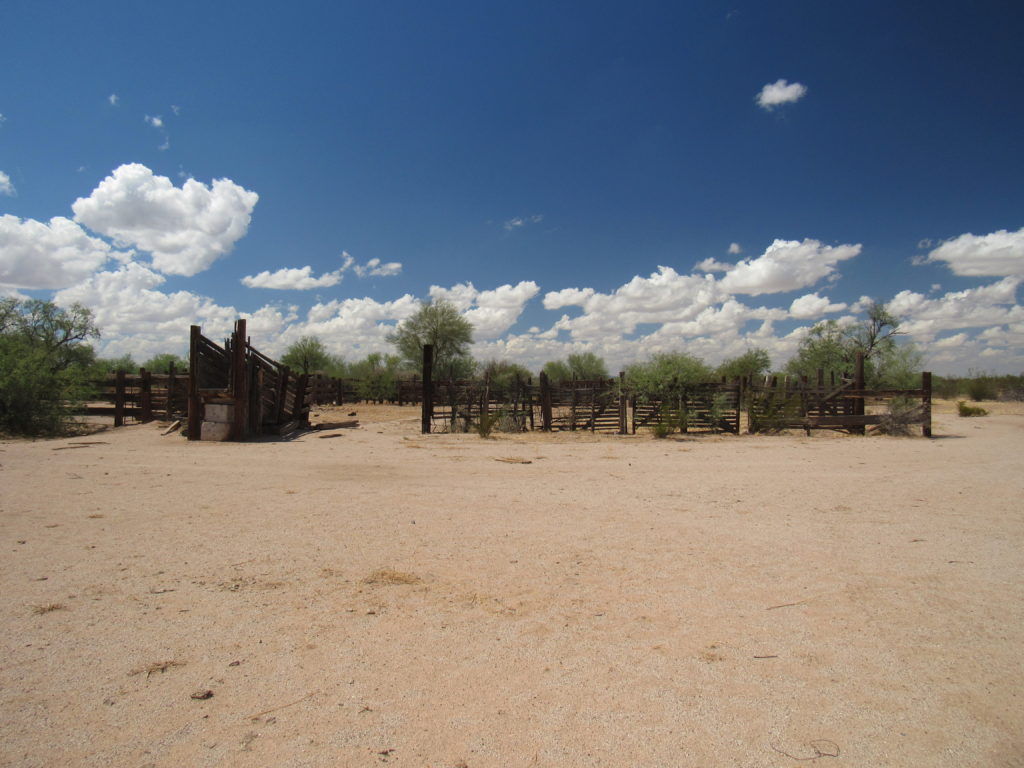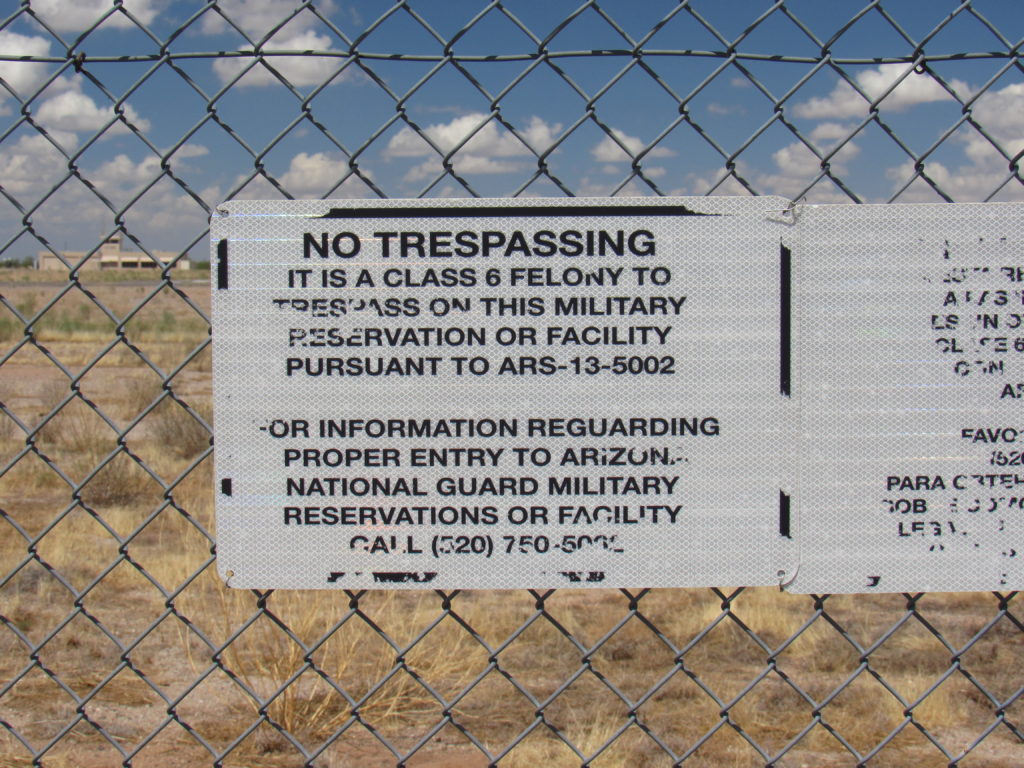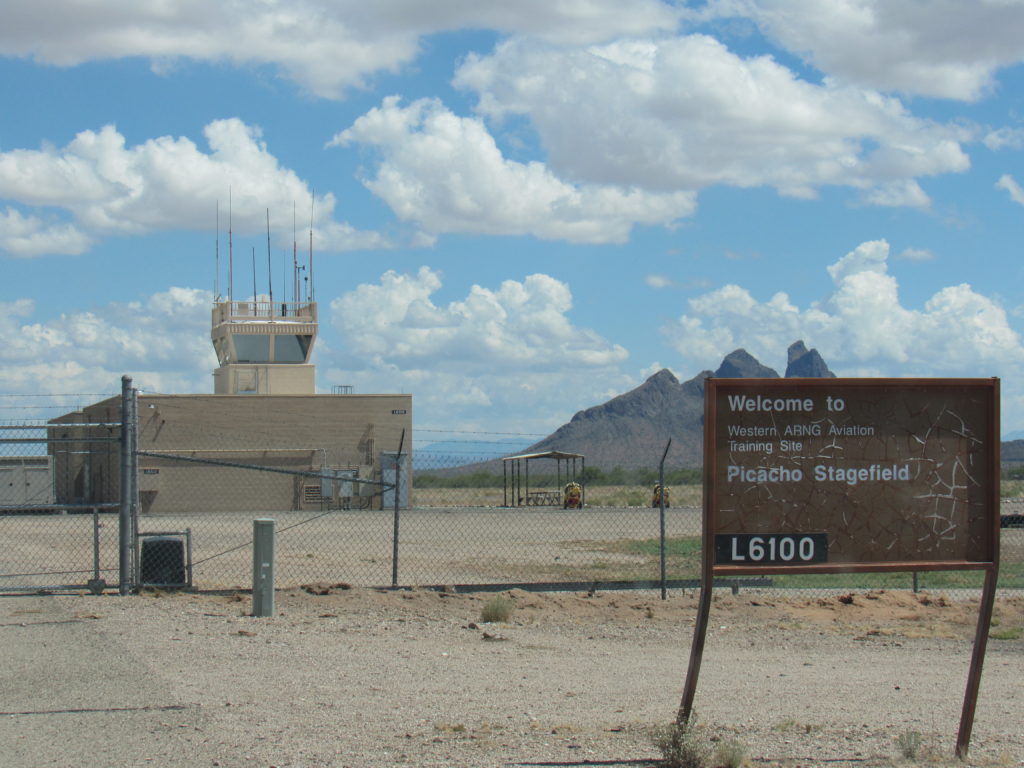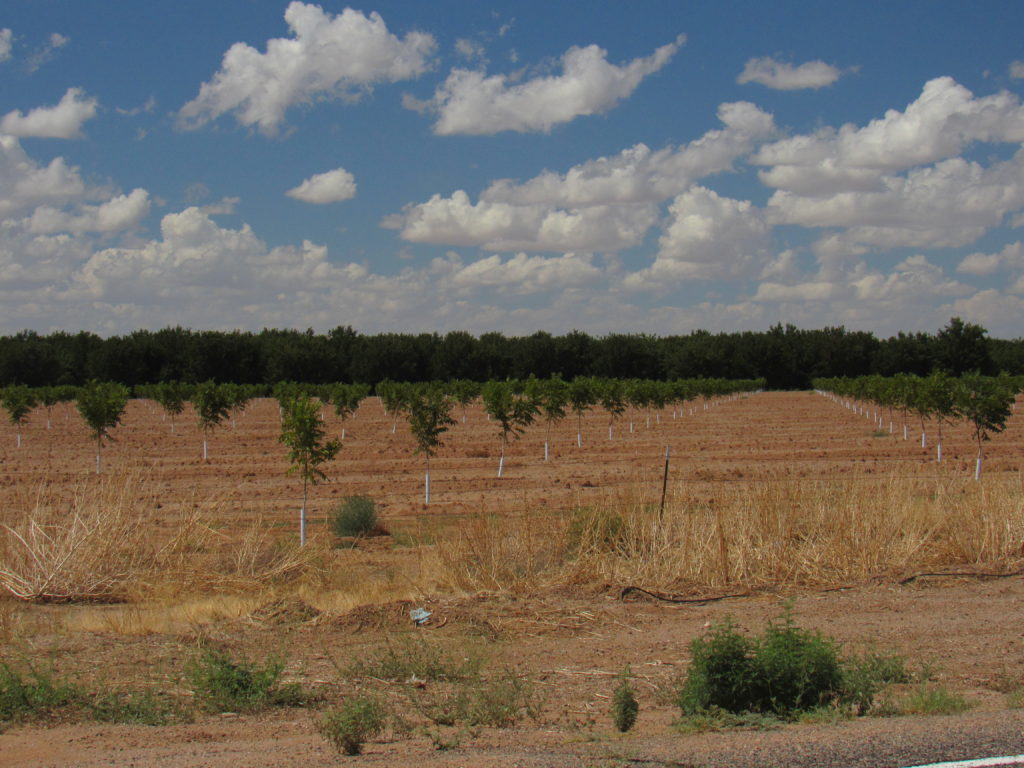It’s been a long, hot summer here in the desert, a time of little climbing (unless you travel far afield or go up into the high country). In my case, almost 2 months had passed since I’d been out in the hills, so one day in mid-September I thought I’d head out for the day. It was almost 7 o’clock by the time I set out, heading north along the freeway. After only 25 miles, I exited and drove along the frontage road for a while. While along this stretch, I saw a police vehicle approaching in my rear-view mirror at high speed. I pulled over to let him pass, and shortly afterwards I did the same for a fire truck. Minutes later, I came upon both vehicles parked on the side of the road. I slowed way down to have a look. There, I saw a man lying in a fetal position in the dirt. Some passer-by must have spotted him and called it in. I slowly drove on by, as the police and fire certainly had the situation well in hand as they approached him. Poor guy, I hope he was okay.
Arriving at the village of Picacho, population 500, I headed south a few more miles, then took off on a lonely dirt road into the desert. By the time I parked and set out on foot, it was already 8:00 AM – a late start for me, but the day wasn’t supposed to exceed the mid-90s temperature-wise, so I wasn’t too worried. Even so, it felt warm, probably around 80 degrees. I was here to climb a small no-name peak, known only by the fact that a benchmark by the name of Picacho sat on its summit.
It was a mile and a half to the peak across flat desert. Here’s something I saw along the way. Three saguaro cacti sat beneath an ironwood tree – this was no accident, as they need the shelter of a nurse plant to shield them from the harsh desert sun when they are very young.
Before long, I approached the peak. It was a simple 500-foot climb to the top.
I noticed several helicopters flying around the area throughout the day, but didn’t think too much about it at the time. As I walked the last few steps to the summit, I was thinking that nobody else would have bothered to climb up to such an obscure spot – after all, it wasn’t even a proper summit, lacking the requisite 300 feet of relief in order to qualify. Imagine my surprise when I saw this – a metal ammo box tucked into a cairn of rocks.
I lifted out the box and saw the word “geocache” printed on its side. Well, that made more sense – no right-minded climber would bother climbing this obscure bump on the far southwestern fringe of the Picacho Mountains, but geocache folks, they’ll leave stuff just about anywhere. Hey, wait a minute, I’m a climber and I was there – so much for that theory. I opened up the ammo box and looked inside. There were plenty of papers, each bearing the names and dates of previous visitors. As I carefully pored over them, I discovered evidence of 38 previous parties who had visited. Man, this was a popular spot! Among all those names were those of 3 climbers known to me. I added my own in a small book I found.
It was time for a bit of lunch and a look around. The benchmark itself was set on the end of a metal rod which had been driven deeply into a crack in the native rock.
The views were first-class, and I need to share some of them with you. Here is Newman Peak, the range high-point, 6.5 miles to the NNE in this telephoto shot.
Another peak, only a mile away to the northeast, is Peak 2702. This is a double summit, and its highest point is the bump on the right (south).
Here’s the best view of the lot – the 2 summits you see are Picacho Peak on the right, and Peak 3161 on the left.
This was a great spot to spend a while. I could even see where my truck was parked. In this next photo, at about 12:30 o’clock from dead-center way out there is a horizontal green patch with a tan clearing to the left of it. I’m parked there. See all the green stripes running across the photo? Those are watercourses where rainfall will run at rare intervals, enough that vegetation will grow along them.
After a spell, I packed up and started down the slope. It was an uneventful descent and walk back across the desert to my truck. En route, I came across this scene. A patch of hedgehog cactus had died (the black stuff) while a living group thrived next to it. It’s a common scene in our desert, and I thought I’d share it with you.
The better part of 4 hours had passed by the time I’d returned to my truck. Once there, I wanted to check out something that had piqued my curiosity. Nearby were 2 large patches of vegetation. That always indicates the presence of water here in the desert. Upon closer inspection, I found that a bulldozer had created large earthen berms as much as 15 feet high. These are called tanks. During times of rare heavy rainfall, water flows through the desert and through an inlet into the tank. It flows in, but can’t flow out. Here’s how the berms look.
And here’s a view of the inside of each of the tanks.
As you can see, most of the water has already evaporated (dried, cracked mud all around). These simple ponds are well-engineered to collect even minimal runoff and then hold it for a long time. These had not been replenished for many months, yet they still offered life-saving water for cattle (the main reason they were created) and any other creatures who happened by.
Driving back out towards pavement, I passed a few things of interest. The first was this bird’s nest in a cholla cactus, built by a cactus wren, Arizona’s state bird. I’m always impressed by their ability to negotiate all those sharp spines.
Then there was this corral. Old, no longer used, but still standing – you can see the loading chute on its left side. There are countless thousands of these all over Arizona, one of my favorite symbols of the old west.
Then I came upon something I had no idea even existed. A fenced compound 1,700 feet by 2,500 feet, festooned with signs like this one.
As I drove around it, I came to what looked like an entrance.
So that’s what it was – the Western Army Reserve National Guard Aviation Training Site, more properly called the Picacho Stagefield. I learned it was for helicopters, not airplanes. That would explain the choppers I’d seen flying around all morning. Near the gate was a keypad and a speaker, but I didn’t bother to get buzzed in! Poking up behind the sign is the dramatic summit of Picacho Peak, almost 6 miles to the ESE.
Back out at pavement, I headed north to return home. Soon, I found myself driving along something familiar. Anyone who has ever driven the freeway between Phoenix and Tucson has passed by the pecan orchard – it can be seen on both sides of the road. It stretches into the distance, dark and mysterious. In the hundreds of times I’ve driven by in the last 35 years, I’ve never really known anything about it. This time, I took the liberty of stopping at their office and talking to them. They were happy to tell me about their operation.
They have 20,000 mature trees on 800 acres. Their oldest trees are about 45 years old, but pecan trees can produce nuts up to 100 years of age. On average, there are about 24 trees per acre. In addition to their mature trees, they also have another 4,000 new trees planted – they’re definitely planning for the long-term. I asked him how they actually harvest the pecans, and here’s what he said. They have a machine, a mechanical shaker, which grabs the trunk of the tree and shakes it. This has to be done at just the right time of the year, when the nuts are at a certain ripeness. The nuts all fall to the ground and are then swept into rows, where they can be scooped up and taken to be processed in their plant.
The photo shows young trees, while in the distance is the dark wall of the mature grove. Now that I know something about the grove, it seems less mysterious when I pass by on the freeway. All in all, a fun day – there’s always something new to see in the desert. Thanks for coming along.

